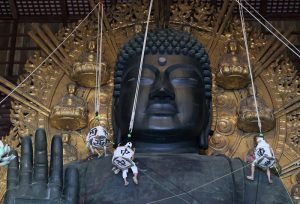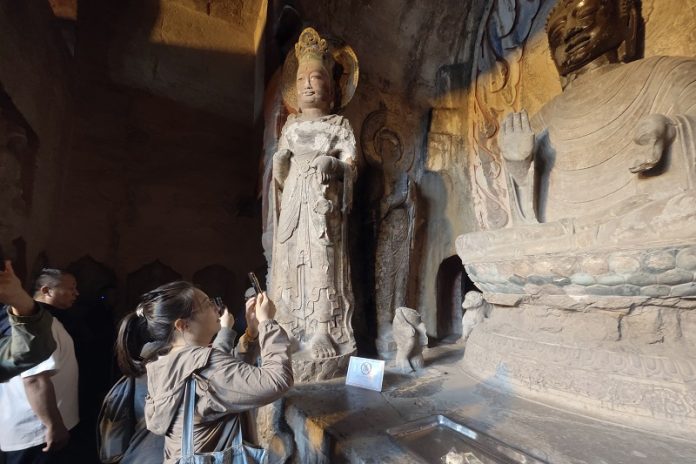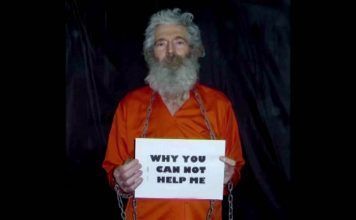By Kayhan Life Staff
A recent book by Khosrow Dehdasht Heidari sheds new light on the Iranian roots of Buddhism in China, and presents compelling evidence that the individual who introduced Buddhism to China was an Iranian prince who became known as An Shigao.
The book is titled “The Formation of Chan: Chinese Buddhism,” and is published by Satrap Press.

As it happens, the propagation of Christianity in Armenia was also facilitated by an Iranian nobleman of Parthian descent, Gregor, who later earned the title of ‘Illuminator’. This title was bestowed upon him by the newly established Armenian Church in 301 AD.
These historical parallels suggest that the Parthians played a pivotal role as intermediaries and cultural brokers in ancient times. Their open-minded and tolerant approach to religion and belief systems may have been instrumental in fostering such widespread cultural exchanges. It seems that the Parthians’ ability to view different philosophies and faiths with an unbiased perspective allowed them to serve as bridges between diverse civilizations.
Using the Zen monastic name ‘Dotetsu Zenji’, meaning ‘Zen teacher,’ author Heidari provides unique insights.
Heidari spent two years undergoing rigorous Zen training in Japan. Prior to that, he received extensive training in meditation in India, though it did not fully meet his expectations.
Heidari has experienced much austerity on this path. Towards the end of his training, he received an invitation from the Kyoto Zen Study Center to study Zen, where he deepened his understanding and received the title of ‘Dotetsu Zenji’.
The following is a Kayhan Life interview with Heidari.
Please begin by briefly defining Zen.
Zen is a Japanese term equivalent to the word ‘meditation’ in English, ‘chan’ in Chinese, ‘dhyana’ in Sanskrit, and ‘muraqabah’ in Persian. It’s a psychological approach aimed at achieving mental and emotional balance and tranquility. Many have also used this approach to treat illnesses or psychological problems.
Meditation is a state of trance that is also referenced and employed in hypnosis. Its ultimate outcome is a sudden awakening after a period of intense concentration and immersion in a trance-like state.
Zen advocates maintain that Zen is not a religion with strict religious precepts, but rather an approach to preventing and treating mental illness, allowing individuals to untie their mental knots through this discipline. Zen or meditation is employed to treat ailments such as stress, depression, migraines, phobias, paranoia, and various anxieties. It involves techniques and practices that are both preventive and therapeutic. Many individuals have successfully overcome their psychological challenges through personal effort.
How did you become acquainted with the historical reality of a Parthian prince introducing Buddhism to China, and interested in researching it?
I discovered this historical fact through my study of several books and my own ongoing research. The first is a book by Professor Antonio Forte of Italy, “The Iranian Family,” which I personally translated into Persian and which was published by Satrap Press in London. The second is Erik Zürcher’s “The Buddhist Conquest of China.” The third is Paul Pelliot’s « Les influences iraniennes en Asie Centrale et en Extrême-Orient. » In parallel, my own research led me to this discovery.
How did ‘Chan’ originate?
Let’s start with an explanation of Buddhism. In 563 BC, Buddha was born into a royal family. In his youth, he sought to discover the truth in an effort to eradicate suffering from human life and the world as a whole. After six years of austerity with the ascetics of his time, and unable to achieve the desired result, he left the court to experience the world directly, understand it, and share his understanding with others.
In what is now Bihar, India, sitting under the ‘Bodhi’ or Bodhi tree, he vowed not to leave until he attained enlightenment. On the seventh day, with the rising of the morning star, he became enlightened. He declared that all humans have the potential for enlightenment. As a result, many people in his time attained enlightenment, and others have continued to do so until the present day.
Buddha’s teachings spread to neighboring lands in the 3rd century BC by Ashoka, a once cruel and tyrannical king who became very just after converting to Buddhism. These teachings gradually entered Iran under the Parthian dynasty.
A young Parthian prince (later known as An Shigao in Buddhism), who was fluent in Sanskrit, became deeply acquainted with Buddha’s teachings. After some time, he went to China and formed a translation team at the Luoyang temple.
This group translated 30 books containing Buddha’s teachings over 20 years, combining and integrating them with the ideas of Confucius and Laozi. Thus, ‘Chan’ was born from the synthesis of the ideas of these three great thinkers of the ancient world: Buddha, Laozi, and Confucius.
Later, a Japanese monk named Myōan Eisai, while traveling in China, became acquainted with the ideas of Chan, and brought them to Japan along with green tea, integrating them with Japanese psychological ideas, resulting in the emergence of Zen. In other words, Zen is a transformation of the Chinese Chan. In modern times, these ideas, namely Zen and the numerous books and articles related to it have been introduced to the Western world.
What are the similarities between Buddha and An Shigao?
Buddha and An Shigao were both princes and heirs to the throne. Their fathers aimed to preserve their kingdoms and expected both to succeed them. However, both made the ultimate decision to renounce worldly life. They shared a common goal: to liberate people from suffering and hardship. Subsequently, they both became monks.
It’s worth noting that An Shigao is a Chinese name given to the Iranian Parthian prince. Unfortunately, we lack reliable historical records to determine his original Persian name.














